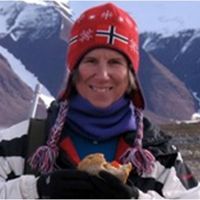McCorkle et al., 2013
Using stable isotopes to determine sources of eroded carbon in low-order Sierra Nevada catchments
McCorkle, E.P., A.A. Berhe, C.T. Hunsaker, M.L. Fogel, and S.C. Hart (2013)
American Geophysical Union, Fall Meeting 2013, abstract #B13G-0604
-
Reynolds, Sierra, STAFF
-
Sierra, INVESTIGATOR
-
Sierra, INVESTIGATOR
-
Sierra, COLLABORATOR
-
Sierra, INVESTIGATOR
Abstract
Recent studies have shown that soil erosion can induce a terrestrial sink for atmospheric carbon dioxide and impose important controls on biogeochemical cycling of other essential elements. However, little information is available on the source of C eroded from different watersheds (i.e., whether most of the eroded material is comprised of litter, soil minerals from topsoil, vs. deep C eroded due to fresh channelization or scouring of stream banks). In order to identify sources of eroded carbon, we compared the C to N ratios and 13C, and 15N stable isotope concentrations of potential source materials to sediments collected in basins at the outlet of low order catchments in the western slopes of the Sierra Nevada. Potential source materials (i.e., surficial organic and mineral soil and stream bank sediments) from three landform positions (crest, back slope, toe slope) were sampled from low- and high-elevation catchments within the Kings River Experimental Watershed. The potential source materials were compared with materials collected from sediment basins at the outlet of the sampled catchments. Preliminary results indicate that the different landform positions have similar concentrations of 13C and 15N, but the stable isotope concentrations of sediments reflect a combination of sources. Further analysis will delineate which pool of carbon is the main contributor to the sediments. Determining the source of the eroded carbon in these catchments is critical for assessing the fate of the eroded C after it is laterally distributed by soil erosion to downslope depositional landforms within the same catchment, or exported out of these catchments.
Citation
McCorkle, E.P., A.A. Berhe, C.T. Hunsaker, M.L. Fogel, and S.C. Hart (2013): Using stable isotopes to determine sources of eroded carbon in low-order Sierra Nevada catchments. American Geophysical Union, Fall Meeting 2013, abstract #B13G-0604.
 This Paper/Book acknowledges NSF CZO grant support.
This Paper/Book acknowledges NSF CZO grant support.
Explore Further





